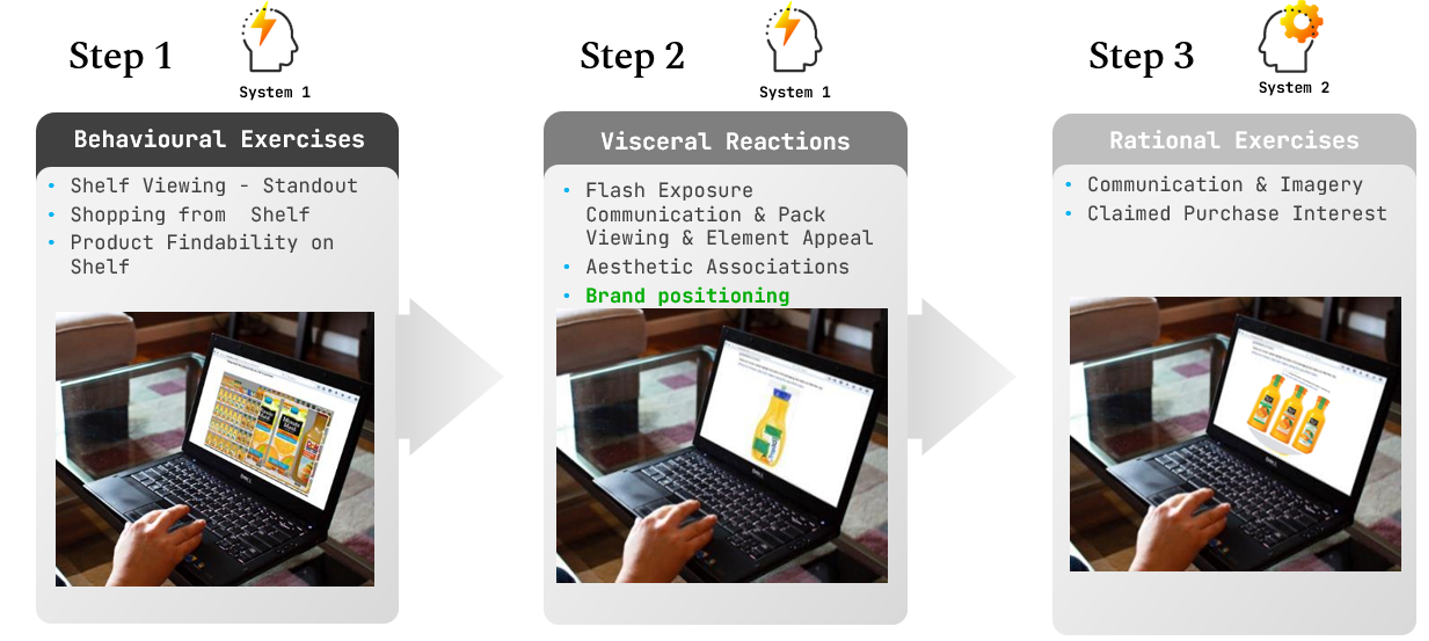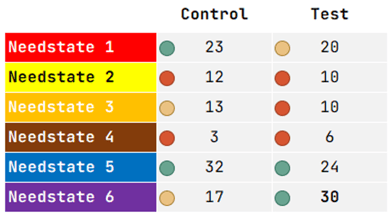Before we dive into this question, it’s important to first appreciate: 1) the critical role of System 1 thinking in the Shopper Journey and 2) the primary role of packaging design, in and of itself.
The Role of System 1 Thinking
System 1 dominates the Shopper’s Journey and decision-making. 
With the speed in which humans select and deselect, it’s easier to grasp the importance of pack design and appreciate the potentially competing role of communicating a brand’s story.
The Primary Role Of Packaging Design
It is commonly recognized that packaging has 6 roles:
| The 6 Roles Of Packaging Design & Communications | What it influences |
| Get noticed on shelf (stand out + recognition for pack restages) | Purchase |
| Instantly deliver the category drivers (to avoid de-selection) | Purchase |
| Help navigation between SKUs to ultimately drive choice (clear SKU portfolio and benefits) | Purchase |
| Communicate the brand story | Brand |
| Being convenient to use | Repurchase |
| Being recyclable (growing concern) | Loyalty, brand affinity |
With that framework in mind in the world of CPG, because the decision-making process at shelf is so unique, the role of packaging in communicating the brand positioning is not the #1 objective.
While we can and should measure how well a pack conveys the intended brand positioning, it should never be done in isolation of actual purchase decisions. That would mean forgetting the most important roles of the pack: To be seen, understood, and purchased.
In fact, losing the focus of shopper KPIs is often the first and most critical mistake made by CPG companies during a packaging restage.
Still, Packaging Does Play An Important Role Within The Brand Positioning
Packaging design must reconcile two objectives: short-term shopper considerations and long-term brand impact. 
Short term, the Shopper KPIs are measured through our proven behavior-based methodologies, either online or in our renowned PRS IN VIVO Retail Labs.
Longer term, brand positioning communication on packaging must be considered in early-stage design to ensure it doesn’t interfere with shopper purchasing behavior. And, if done properly, perhaps increases the chances of being purchased. And repurchased.
As shown above, most CPG products are de-selected in 0.34 seconds and the ultimate purchase decision is made in 2.2 seconds. And, in those couple of seconds, any “brand” communication must work symbiotically with the design that drives purchase.
The PRS IN VIVO Approach To Properly Balance Purchase Drivers & Brand Development
1. Early-Stage Design Consulting: Semiotics & System 1
We apply a 3-step process:
- A semiotician reviews the packaging designs to determine what they spontaneously convey. We ask the semiotician to hunt for cues that can communicate the new positioning intuitively (in a System-1 way).
- A creative workshop is held with brand developers and designers to determine whether the spontaneous take-out of the various codes are in line with the intended positioning and how it might be improved
- With a new creative brief, the packaging design agency reworks the packaging designs if needed, to fill the brand positioning gaps whilst balancing the key category purchase drivers
2. Validation: System 1 Brand Assessment
PRS IN VIVO’s packaging validation performance replicates the speed in which deselection and selection takes place. Then, we replicate the very small amount of time the packaging would have to convey brand positioning. Why? Because any long-term pack exposure would lead to biased answers.

We ask our clients for the 12 attributes that are the most correlated to the consumer need states.
Respondents are asked to pick 2 to 3 attributes that best fit with the pack within an association matrix.
Results are then benchmarked to the control cell to measure how the new pack was able to move the needle towards the right brand positioning direction.

Summing Up
As marketing and insight budgets get tighter, brands need to make sure they’re maximizing the value of each project. Next time you conduct a packaging test in which the brand positioning is new or needs to be better considered, it’s probably worth adding an early-stage brand positioning module to ensure that the brand communication is integrated from the get-go.
When you validate the pack and want to assess its performance from a branding standpoint, do it with the CPG-shopping framework in mind: intuitive & System-1, as consumers don’t take as much time as you do to rationalize what’s on the pack. Still, that can and should be measured, as long as the other roles of packaging design are not forgotten.
ABOUT PRS IN VIVO
PRS IN VIVO, a leader in behavioral research and readily recognized as the world leader in package testing, runs market research in both online and in-person environments.



